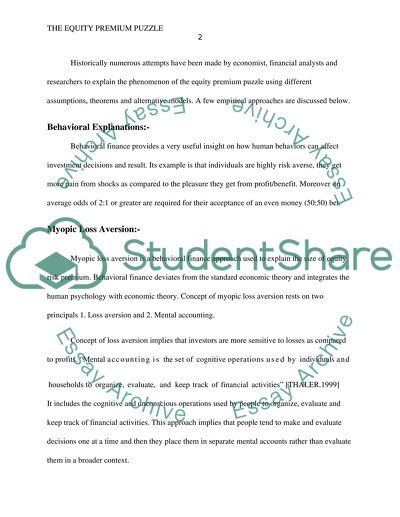Cite this document
(“The Phenomenon of the Equity Premium Puzzle Assignment”, n.d.)
Retrieved from https://studentshare.org/finance-accounting/1612247-i-the-concept-of-the-equity-premium-puzzle-and-empirical-approaches-to-explain-this-phenomenon
Retrieved from https://studentshare.org/finance-accounting/1612247-i-the-concept-of-the-equity-premium-puzzle-and-empirical-approaches-to-explain-this-phenomenon
(The Phenomenon of the Equity Premium Puzzle Assignment)
https://studentshare.org/finance-accounting/1612247-i-the-concept-of-the-equity-premium-puzzle-and-empirical-approaches-to-explain-this-phenomenon.
https://studentshare.org/finance-accounting/1612247-i-the-concept-of-the-equity-premium-puzzle-and-empirical-approaches-to-explain-this-phenomenon.
“The Phenomenon of the Equity Premium Puzzle Assignment”, n.d. https://studentshare.org/finance-accounting/1612247-i-the-concept-of-the-equity-premium-puzzle-and-empirical-approaches-to-explain-this-phenomenon.


